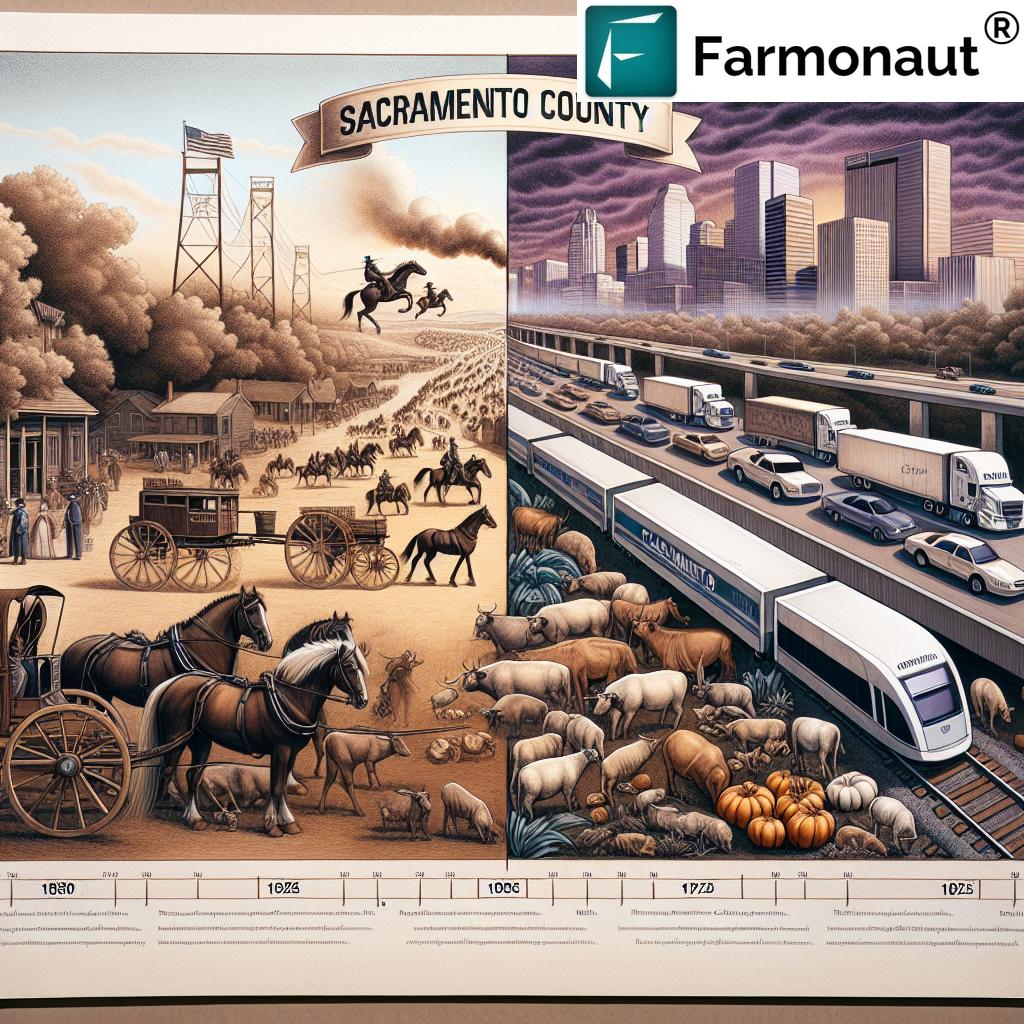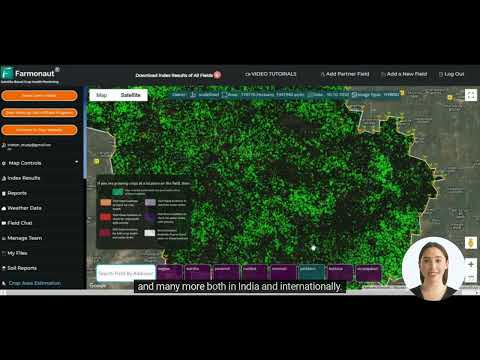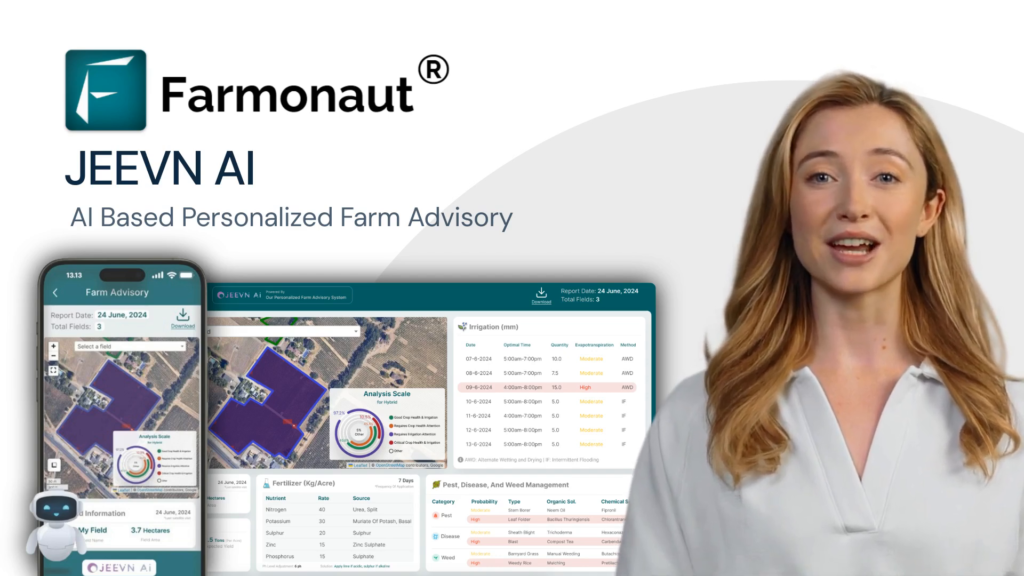Sacramento County’s 175th Anniversary: From Gold Rush to Agricultural Powerhouse
“Sacramento County’s population grew from 9,000 to 1.6 million in 175 years, a staggering 17,700% increase.”
As we celebrate the remarkable 175th anniversary of Sacramento County, we find ourselves reflecting on an incredible journey that has shaped not only our local community but also the entire state of California. From its humble beginnings during the Gold Rush era to its current status as an agricultural powerhouse and vital transportation hub, Sacramento County has played a pivotal role in the development of the Golden State.
In this comprehensive exploration of Sacramento County’s rich history, we’ll delve into the fascinating transformation that has occurred over the past 175 years. We’ll uncover how this region evolved from a collection of dairy farms to a thriving metropolis crisscrossed by bustling highways. Join us as we examine the county’s contributions to critical transportation milestones, including the Pony Express, the Transcontinental Railroad, and the modern interstate system.

The Gold Rush Beginnings
Sacramento County’s story begins with the California Gold Rush of 1848. As news of gold discovery at Sutter’s Mill spread like wildfire, thousands of fortune seekers flocked to the region, transforming the sleepy settlement into a bustling hub of activity. This influx of people laid the foundation for what would become Sacramento County.
On February 18, 1850, Sacramento officially became one of California’s original 27 counties, marking the beginning of its formal existence. At the time, the county boasted a modest population of just over 9,000 residents, a far cry from the 1.6 million who call it home today.
From Agricultural Heartland to Transportation Hub
As the Gold Rush fever subsided, Sacramento County’s rich soil and favorable climate paved the way for its transformation into an agricultural heartland. The region became known for its bountiful crops and dairy farms, establishing itself as a crucial food producer for the growing state.
One of the county’s long-time residents, John Jackson, born in 1929, recalls his childhood on a dairy farm where Highway 99 now stands. “I milked cows until I was 20 years old,” Jackson reminisces, providing a vivid glimpse into Sacramento’s agricultural past.
However, Sacramento’s strategic location soon catapulted it into becoming a crucial transportation hub. The county played a vital role in three major transportation systems that shaped California’s development:
- The Pony Express: Inaugurated in 1860, this mail service connected Sacramento to the East, facilitating rapid communication across the continent.
- The Transcontinental Railroad: Completed in 1869, this monumental project linked Sacramento to the rest of the nation, spurring economic growth and population expansion.
- The Interstate Highway System: Developed in the 1950s, this network of highways further solidified Sacramento’s position as a transportation nexus, connecting it to major cities across California and beyond.
As Kim Nava, the county spokesperson, aptly puts it, “Without Sacramento County, California would be a very different state.” This statement underscores the profound impact our county has had on shaping the Golden State’s development and prosperity.
Agricultural Heritage and Innovation
While transportation has played a significant role in Sacramento County’s growth, agriculture remains at the heart of its identity. The county’s fertile soil and Mediterranean climate have made it an ideal location for a diverse range of crops, from fruits and vegetables to nuts and grains.
Today, Sacramento County continues to be a leader in agricultural production, embracing innovative farming techniques and technologies to increase yields while promoting sustainability. One such innovation that has gained traction among local farmers is the use of satellite-based farm management solutions, such as those offered by Farmonaut.
Farmonaut’s platform provides valuable services such as real-time crop health monitoring, AI-based advisory systems, and resource management tools. These technologies enable farmers to make data-driven decisions, optimize their operations, and improve crop yields while minimizing environmental impact.
Population Growth and Urban Development
Sacramento County’s population growth over the past 175 years has been nothing short of extraordinary. From its modest beginnings with just over 9,000 residents, the county has experienced a staggering 17,700% increase, now home to 1.6 million people.
This remarkable growth has brought about significant changes in the county’s landscape. Areas that were once sprawling dairy farms and chickpea fields have given way to urban development, highways, and bustling communities. The transformation is evident in the experiences of long-time residents like John Jackson, who has witnessed firsthand the evolution of his childhood dairy farm into what is now Highway 99.
Despite the rapid urbanization, Sacramento County has managed to strike a balance between preserving its agricultural heritage and embracing modern development. This delicate equilibrium is a testament to the county’s commitment to sustainable growth and its respect for its roots.
Historical Timeline of Sacramento County’s Development
| Year | Event | Significance |
|---|---|---|
| 1848 | Gold Rush begins | Sparked massive influx of settlers, laying foundation for Sacramento County |
| 1850 | Sacramento County established | Became one of California’s original 27 counties |
| 1860 | Pony Express inauguration | Connected Sacramento to the East, improving communication |
| 1869 | Transcontinental Railroad completion | Linked Sacramento to the rest of the nation, boosting economic growth |
| 1950s | Interstate highway system development | Further solidified Sacramento’s role as a transportation hub |
| 2025 | 175th anniversary celebration | Marks significant milestone in Sacramento County’s history |
“Sacramento County, one of California’s original counties, played a crucial role in three major transportation systems: Pony Express, Transcontinental Railroad, and interstate highways.”
The Demisemiseptcentennial Celebration
As Sacramento County reaches this momentous milestone, a grand celebration is in order. The county is pulling out all the stops to commemorate its 175th anniversary, aptly termed the “demisemiseptcentennial.”
Kim Nava, the county spokesperson, has announced an exciting lineup of events to mark this special occasion. “There is going to be plenty of exciting things happening this year, including opening a time capsule at the end of May,” she revealed. This time capsule event promises to be a fascinating glimpse into Sacramento’s past, offering residents and visitors alike a tangible connection to the county’s rich history.

The county is also encouraging long-time residents to share their memories and experiences of living in Sacramento. “Please share any pictures that you have,” Nava urged. “We’ve got a website. We want people to share their pictures, their memories of Sacramento County.” This initiative aims to create a collective narrative of the county’s history, weaving together personal stories with historical events to paint a vivid picture of Sacramento’s evolution.
Sacramento’s Legacy and Future
As we reflect on Sacramento County’s 175-year journey, it’s clear that its impact extends far beyond its borders. From its role in the Gold Rush to its status as an agricultural powerhouse and vital transportation hub, Sacramento has been instrumental in shaping California’s development.
Looking to the future, Sacramento County continues to embrace innovation and sustainable growth. The agricultural sector, in particular, is at the forefront of adopting new technologies to enhance productivity and sustainability. Platforms like Farmonaut are playing a crucial role in this transformation, offering farmers advanced tools for precision agriculture.
For those interested in leveraging these advanced agricultural technologies, Farmonaut offers comprehensive solutions through its API and mobile applications. Developers can also access detailed documentation through the API Developer Docs.
As Sacramento County moves forward, it continues to honor its past while embracing the future. The upcoming demisemiseptcentennial celebration serves as a testament to this balance, inviting residents and visitors to reflect on the county’s rich history while looking ahead to its promising future.
The Role of Technology in Sacramento’s Agricultural Future
As we look towards the next chapter in Sacramento County’s storied history, it’s clear that technology will play a pivotal role, particularly in the agricultural sector. Innovative solutions like those offered by Farmonaut are helping to usher in a new era of precision farming, enabling Sacramento’s farmers to maintain their competitive edge in an increasingly challenging global market.
Farmonaut’s satellite-based crop health monitoring system, for instance, provides farmers with real-time insights into vegetation health, soil moisture levels, and other critical metrics. This data-driven approach allows for more informed decision-making regarding irrigation, fertilizer usage, and pest management, ultimately leading to optimized crop yields and reduced resource wastage.
Moreover, the integration of AI and machine learning technologies, such as Farmonaut’s Jeevn AI Advisory System, is providing Sacramento’s farmers with personalized farm advisory services. These AI-driven tools analyze satellite data and other inputs to generate customized advice, helping farmers improve their productivity and efficiency.
Sustainable Farming Practices
As Sacramento County continues to evolve, there’s an increasing focus on sustainable farming practices. This shift towards sustainability is not just about preserving the environment, but also about ensuring the long-term viability of the county’s agricultural sector.
Technologies like Farmonaut’s carbon footprint tracking feature are proving invaluable in this regard. By providing real-time data on emissions, these tools allow agribusinesses to monitor and reduce their environmental impact, aligning with global sustainability goals while maintaining productivity.
The Future of Transportation in Sacramento
While agriculture remains a cornerstone of Sacramento County’s economy, its role as a transportation hub continues to evolve. The county’s strategic location and existing infrastructure position it well for future developments in transportation technology.
From the potential integration of autonomous vehicles to the development of more sustainable public transportation systems, Sacramento County is poised to remain at the forefront of transportation innovation. These advancements will not only improve connectivity within the county but also strengthen its links to other parts of California and beyond.
Community Engagement and Historical Preservation
As Sacramento County celebrates its 175th anniversary, there’s a renewed focus on community engagement and historical preservation. The county’s initiative to collect and share residents’ memories and photographs is just one example of how it’s working to preserve its rich history for future generations.
This focus on historical preservation, combined with the county’s forward-looking approach to development and innovation, ensures that Sacramento will continue to honor its past while building a bright future.
Conclusion: A Bright Future Rooted in a Rich Past
As we celebrate Sacramento County’s 175th anniversary, we’re not just commemorating a historical milestone. We’re celebrating a legacy of resilience, innovation, and community spirit that has defined this region for nearly two centuries.
From its humble beginnings during the Gold Rush to its current status as a thriving agricultural and transportation hub, Sacramento County has consistently demonstrated its ability to adapt and evolve. As we look to the future, we see a county that is embracing cutting-edge technologies and sustainable practices while never forgetting its roots.
The upcoming demisemiseptcentennial celebration offers an opportunity for all of us to reflect on Sacramento County’s remarkable journey and to envision its exciting future. Whether you’re a history enthusiast, a long-time resident, or a curious visitor, we invite you to join in the festivities and become part of Sacramento’s ongoing story.
Here’s to 175 years of growth, innovation, and community spirit in Sacramento County. May the next 175 years be even more remarkable!
FAQ Section
- What does “demisemiseptcentennial” mean?
The term “demisemiseptcentennial” refers to a 175th anniversary celebration. - When was Sacramento County officially established?
Sacramento County was officially established on February 18, 1850. - How has Sacramento County’s population changed since its establishment?
Sacramento County’s population has grown from about 9,000 residents in 1850 to approximately 1.6 million today, representing a 17,700% increase. - What role did Sacramento County play in early transportation systems?
Sacramento County played a crucial role in three major transportation systems: the Pony Express, the Transcontinental Railroad, and the interstate highway system. - How is Sacramento County celebrating its 175th anniversary?
The county is planning various events, including opening a time capsule and encouraging residents to share their memories and photographs of Sacramento County’s history.
Earn With Farmonaut: Affiliate Program
Earn 20% recurring commission with Farmonaut’s affiliate program by sharing your promo code and helping farmers save 10%. Onboard 10 Elite farmers monthly to earn a minimum of $148,000 annually—start now and grow your income!





















